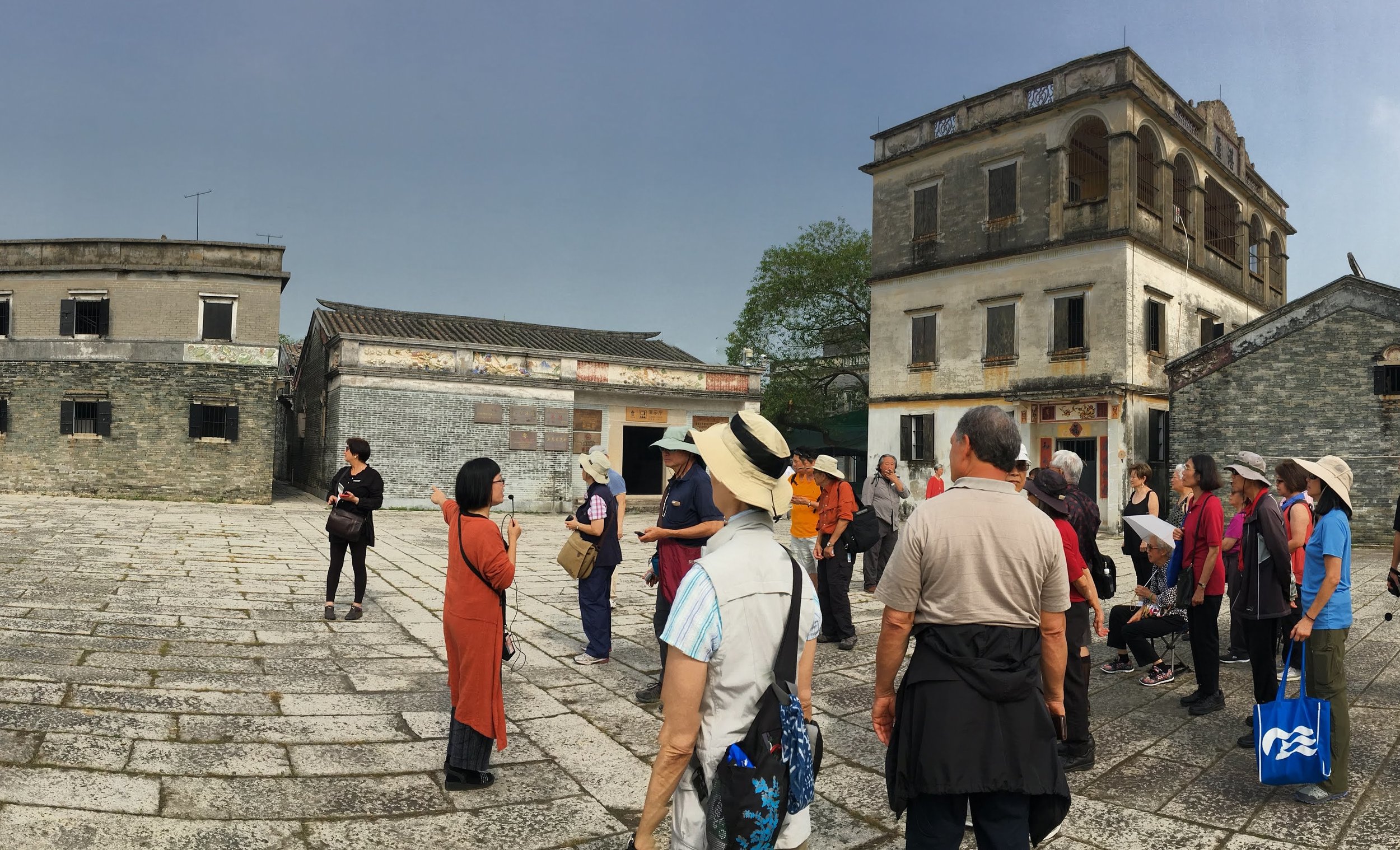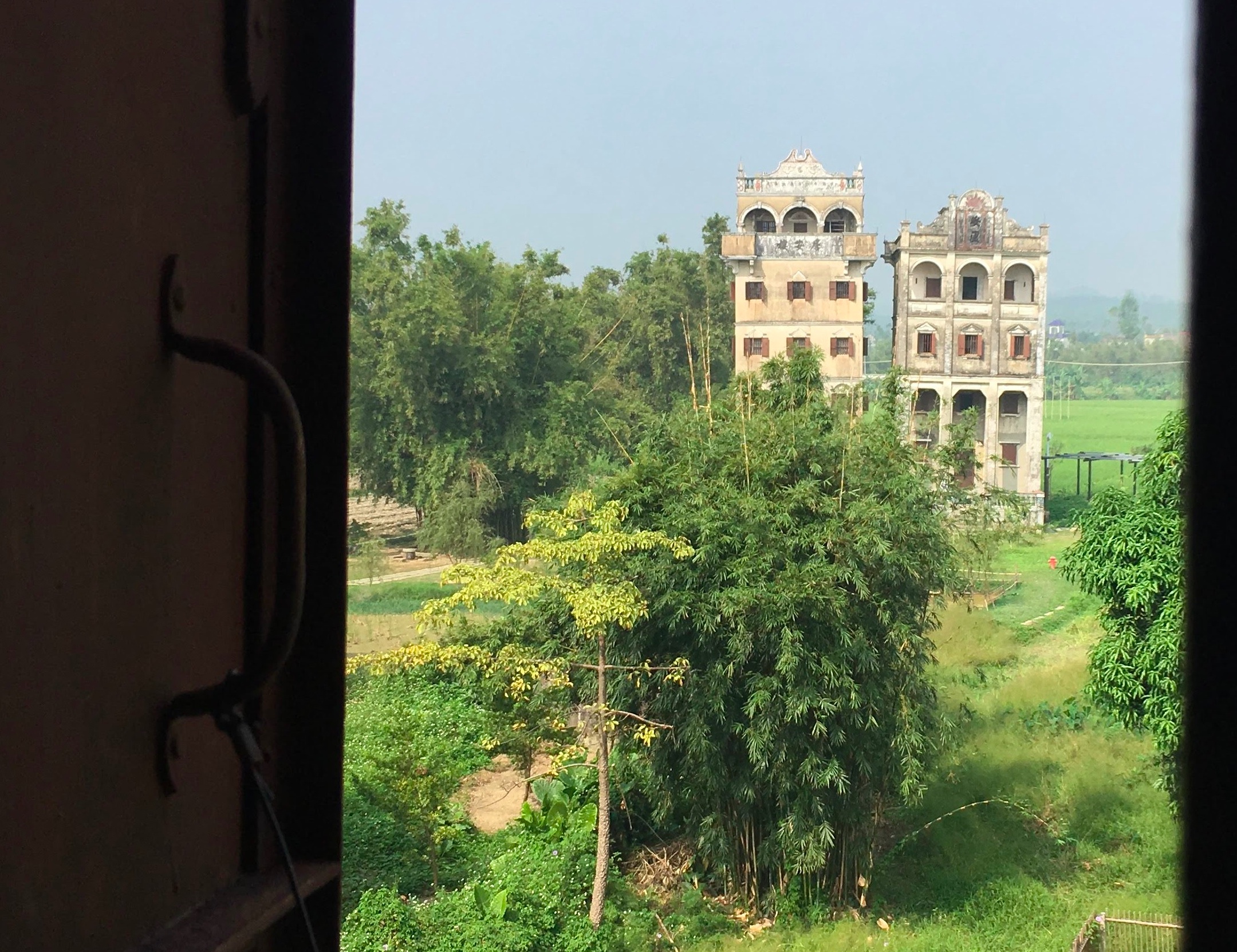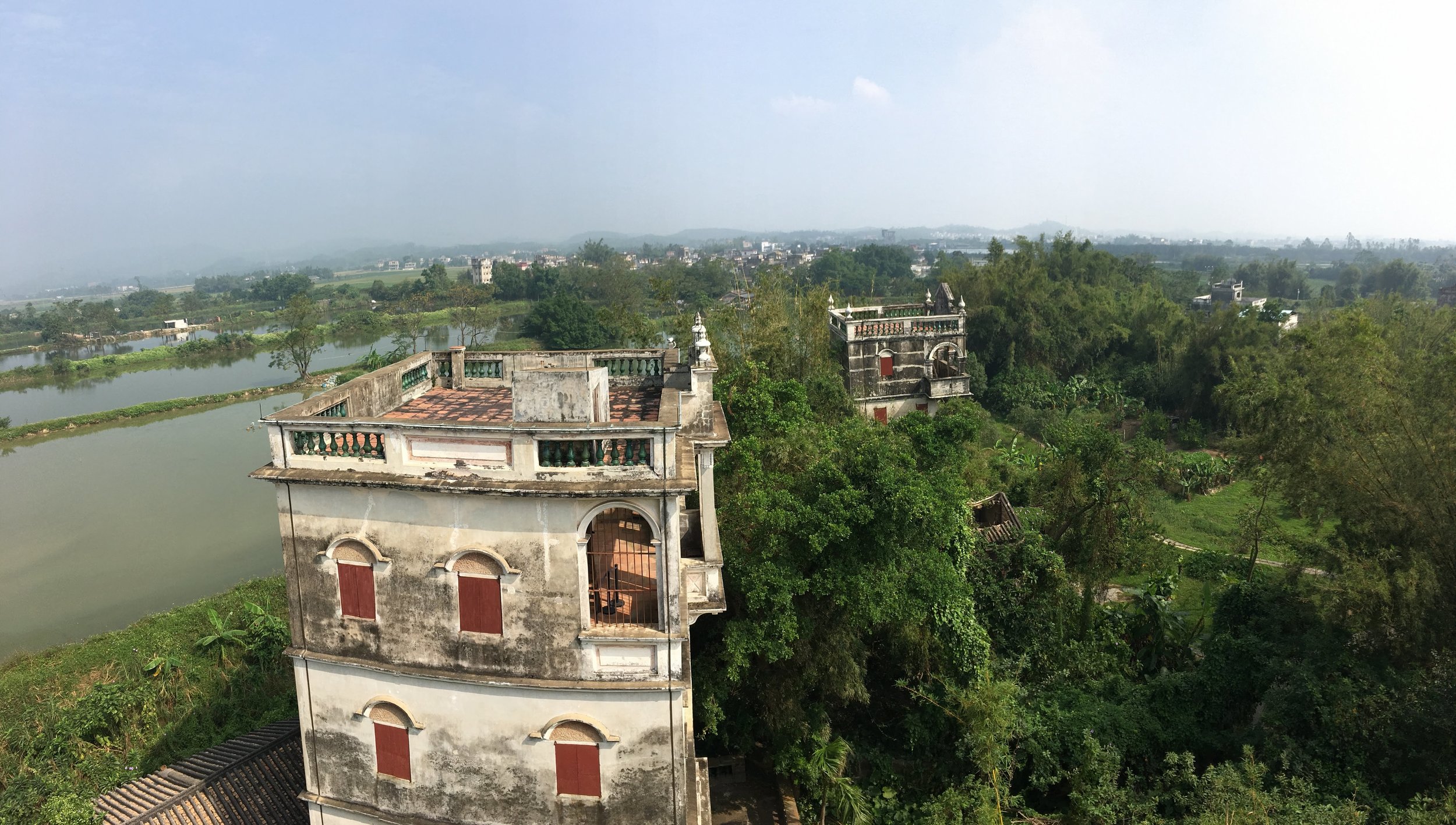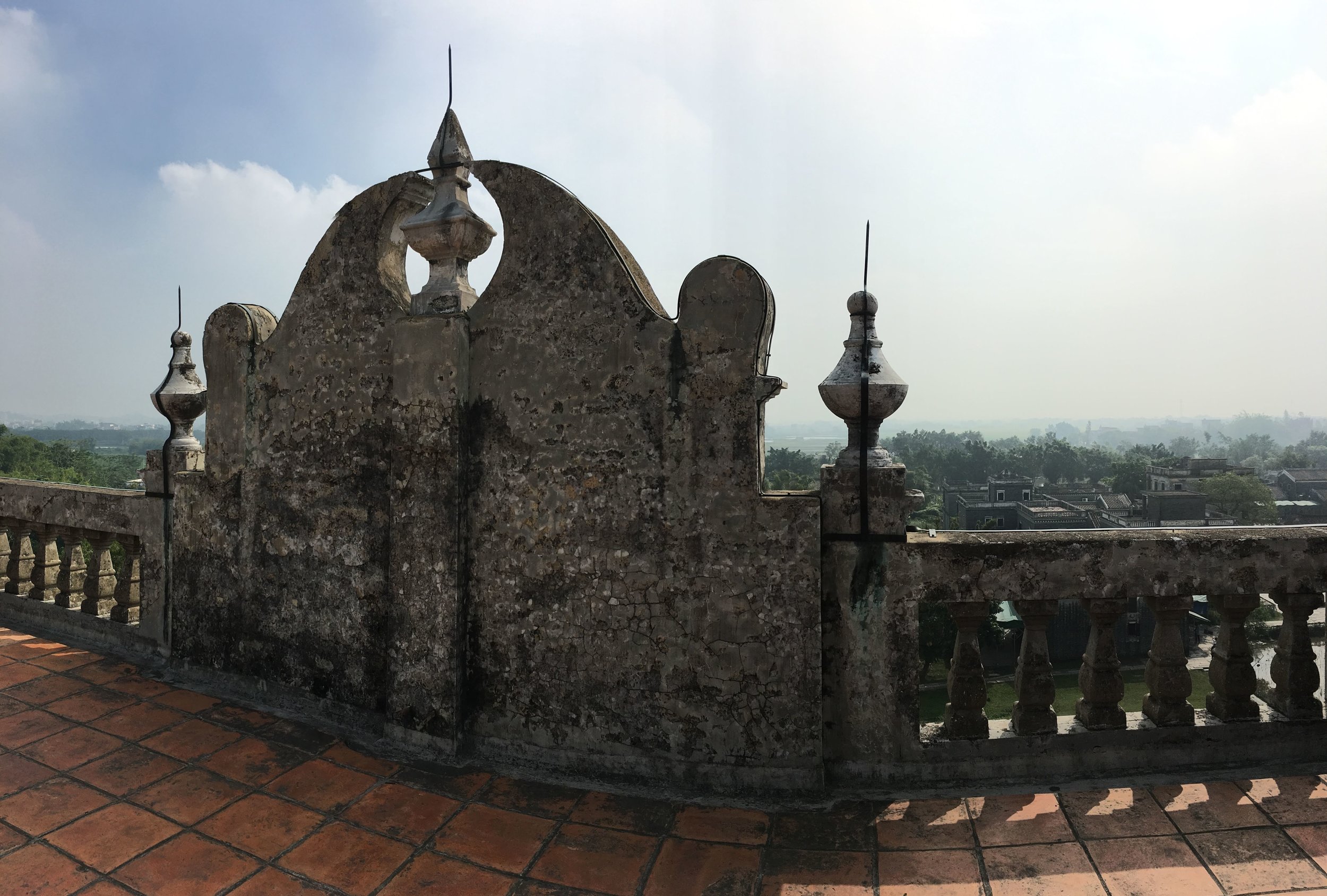Villages of historical imagination
Xīn Nián Kuài Lè (新年快乐), Gung Hay Fat Choy, Happy New Year!
So much keeps happening in the current moment with China, its people, its government and its corporations. I resist the temptation to turn this into a current events blog (just yet) while I have so much recounting and documenting to do with my personal journey, and (hopefully) preparing others to make similar journeys. I hope all the people who helped us on our trip are doing OK and that it’s eminently clear that their work building connections between overseas Chinese descendants and their relatives and ancestors in home villages is an incredibly positive human gesture.
I’m fast-forwarding the blog timeline to Day 6. I’ll rewind at some point to tell you about traveling the backroads to Tiantangshan, site of the tomb of Chen Fengtai, first ancestor of the Chens (Chans) who migrated to Guangzhou (Day 3), our weekend genealogical research workshop with the Wuyi University Department of Overseas Chinese Studies (Day 4), and visits to the Jiangmen City Museum of the Overseas Chinese, and Museum of Dr Sun Yat-Sen in Zhongshan (Day 5).
I’m still catching up with the ways that traveling and learning in China rearranged my categorical ideas about history, time, space, architecture, villages, home, family, nationality, etc. Like the first time you study a language besides the one you grew up speaking— you discover differences between sounds you never considered before, verb tenses you didn’t know existed, words for things you hadn’t previously thought about. Now apply the analogy to your understanding of time and space in general. A discussion of local history rapidly leads back to ancient history so apocryphal it might as well be mythical. You share a “known” common ancestor with hundreds, thousands, tens of thousands, hundreds of thousands (or maybe more) of other today-people. You see that these abandoned villages are each somebody’s home village, each house somebody’s family home, some perhaps visited on holidays or special occasions, possibly looked-after from time to time by a distantly related caretaker, others not at all. You may be the “heir,” not in any legal sense, but in a deeper familial reality, to a house you’ve never seen.
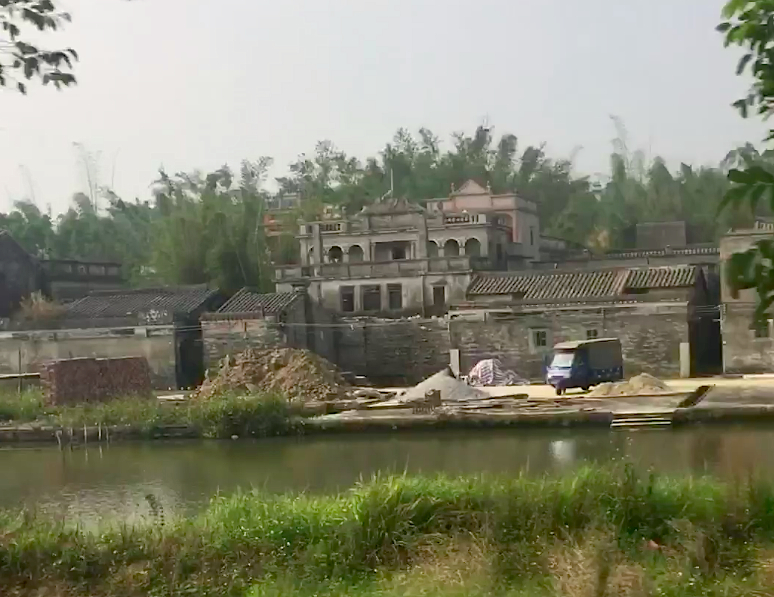
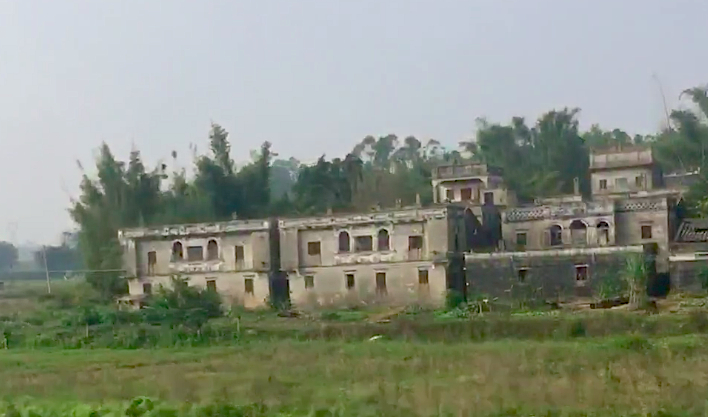
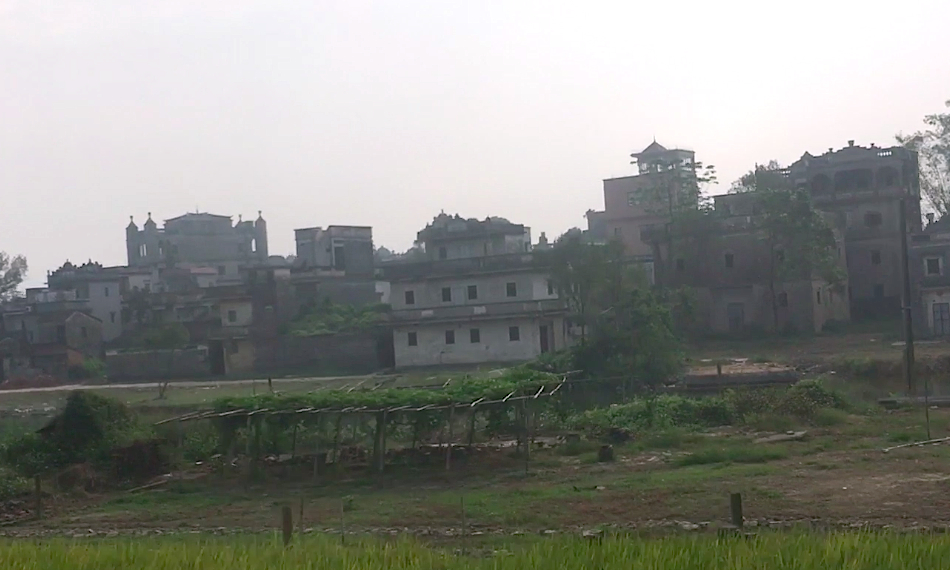

The area around Kaiping in particular has villages with a unique historical-architectural flavor— something i didn’t know about before going on this trip. The money— remittances— sent home by men who had emigrated overseas from these villages contributed to the construction (between about 1905 to 1930) of bigger, taller, and, to me, somewhat bizarre looking (in a good way) mansions, watchtowers and ancestral halls in their home villages. The architectural style is a fanciful, aspirational mashup of Romanesque (or are they neo-classical?) external features (reinforced concrete arches, arcades, loggia, colonnades and the occasional dome) superimposed on taller versions of otherwise traditional Chinese brick buildings. The watchtowers (diāolóu 碉楼) were conceived as family mansions that could be locked down with iron gates and shutters to protect against bandits who might attack the villages in the absence of so many of the menfolk, and so there are slots in the walls to fire rifles out of the towers.
As events of the 20th century unfolded— Japan’s invasion of China, China’s overthrow of the emperor and subsequent republic and communist revolutions— emigrants who had previously thought they might return to retire in their villages chose to stay abroad, and village life dwindled as younger people moved to cities. There was no particular regional nor national appeal for the preservation of these buildings until the late 1990’s or early 2000's, when huáqiáo 华侨 (overseas Chinese and their descendants— people like my grandparents, parents, aunts, uncles, and me) began seeking out their home villages and witnessed the need (and opportunity) to fix up their families’ old properties in the home villages. I like to think the heartfelt intention of the original investment in these buildings and their unusually fine execution — strategic feng shui placement, sturdy craftsmanship, practical yet unprecedentedly weird eclecticism— touched and inspired the huáqiáo returnees.
In the 2000’s, local architecture professor, Dr. Selia Tan of Wuyi University, facilitated a collaboration between some of these huáqiáo, current-day villagers, government agencies and academics. This led to recognition of three historic villages (Zilicun 自力村, Jinjiangli 锦江里 and Majianglong 马降龙), a garden-mansion scenic area (立园, Li Garden) and another diāolóu (known simply as South Diaolou) used in defense against the Japanese invasion as “world cultural heritage sites” by the United Nations Educational, Scientific and Cultural Organization (UNESCO) in 2007. The sites are now fascinating destinations, the Kaiping Diaolou World Cultural Heritage Sites.
This diāolóu was built in 1925 at the behest of a man named Fang Runwen, who emigrated to Chicago. It’s a lovingly recreated tower-home displaying typical kitchenware, furniture, photos and artwork of the time. You feel like the original occupants might walk right in. Each of the lower floors was for a different family unit— married couple plus their children— of the Fang clan. The top story houses an ancestral shrine— analogous to the placement of such shrines in a loft above the ground floor of common village houses.
And of course, the views from the top are breathtaking. This alone makes the diāolóu worth a visit, even for people without ties to the region or interest in its history.
Poking around, I discovered that the official website for Kaiping Diaolou has some really cool slideshows on overseas Chinese history and its subsequent influence on local architecture. It’s a little bit glitchy but if you open the site in Google, let Google translate it to English (instead of using the official English-language version of the site), and hover over the button labeled “Overseas Chinese” down a little ways on the left side of the page, you’ll get a menu to pop up that will let you click on links — the titles are cut off in the menu— to five museum-quality slideshows titled “Overseas Chinese memory,” “Overseas Chinese Construction,” “Overseas Chinese Architecture and Villages,” “Overseas Chinese Architecture Column,” and “Overseas Chinese Architectural Style,” plus pages on “Customary Activities,” (mostly about holidays and festivals) and “Balance” (translations of inscriptions on notable village buildings developed by overseas Chinese.)
If i ever travel to the Kaiping Diaolou and Village sites again, I hope to take the advertised bike tour along the “green lane” connecting several of the sites. There just wasn’t time for it this trip. I can’t find any info about it online so i guess it’s pretty new.
From Zilicun, we got back on the bus and traveled just a few minutes to an amazing place called Cangdong Village. Turns out I have so much I wanna say about it I’ll have to put it in another blog post. Cheers!
